It’s Saturday morning and you’re probably getting ready to hit the centre, grab a cup of coffee in one of the crowded cafés with your friends, do some shopping and then head back home for lunch.
It’s difficult to say when exactly the Saturday špica rose to fame, but what we know for sure is that this social phenomenon typical for Zagreb is connected to cafés and coffee shops the number of which is difficult to count in Zagreb.
The history of coffee is related to the 16th ct Ottoman Empire, when coffeehouses were places for political gatherings. First coffeehouses appeared in Mecca and Damascus, and the first coffeehouse in Istanbul opened in 1555.
A century later, first coffeehouses started to spread around Europe as well. The first coffeehouse in Europe was opened in Venice in 1645 and then coffeehouses started to spread around England and France.
The first coffeehouse in Vienna was founded in 1683 and it was here that the first coffee with milk, the sort which is most popular in Zagreb today, was served.
The culture of drinking coffee that we cherish so much started spreading in the 18th ct and the first coffeehouse in Zagreb appeared in 1748. The owner was Leopold Dun, a salesman, who got his coffee from the Netherlands. In addition to coffee, guests could enjoy tea and hot chocolate at this coffeehouse.The second caffearius to open his shop in Zagreb was Valentinus Oro, in 1756.
The most popular places for serving coffee were tents at Harmica (present day Ban Jelačić Square), until various lavishly decorated coffeehouses appeared around the city at the end of the 18th ct and changed the cultural scene of the city.
Coffeehouses turned into social hubs where members of the social elite would meet to have heated debates on philosophical and intellectual issues, as well as culture and politics. It comes as no surprise then that they were often referred to as the Platonic Academy. All the important European newspapers were available here and guests were able to use the latest technological invention – the telephone.
The most prominent coffeehouses were situated along the central city square, Harmica, and this is how they were described in the City Guide from 1892:
“Big coffeehouses are situated along the southern side of the square, with tables in front of them under canvas awning. The space is decorated with flowers and greenery.“
Grand Caffe was one of the most popular coffeehouses, set on the location of Hotel Dubrovnik. 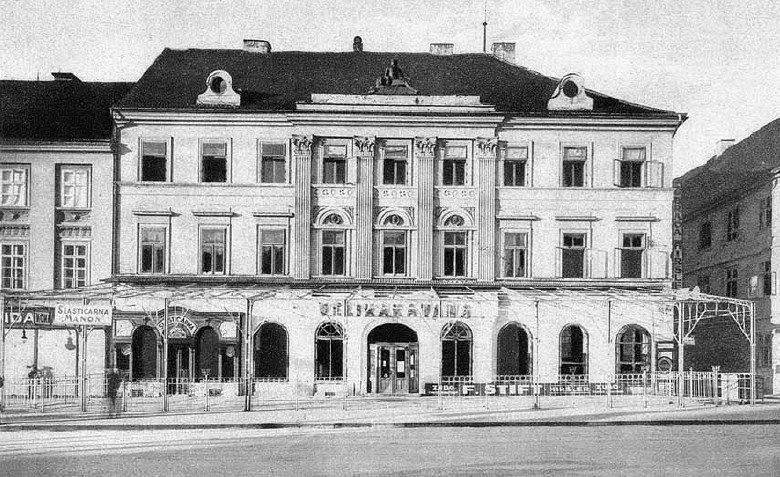
One of the most frequently visited coffeehouses was Narodna kavana, on the corner of Praška Street and Ban Jelačić Square. This is where patriots, members of the Illyrian Movement, would gather to discuss politics, play billiards and dance the Kolo – a collective folk dance in which people form a circle and dance holding hands.Billiard tables were unavoidable in every coffeehouse
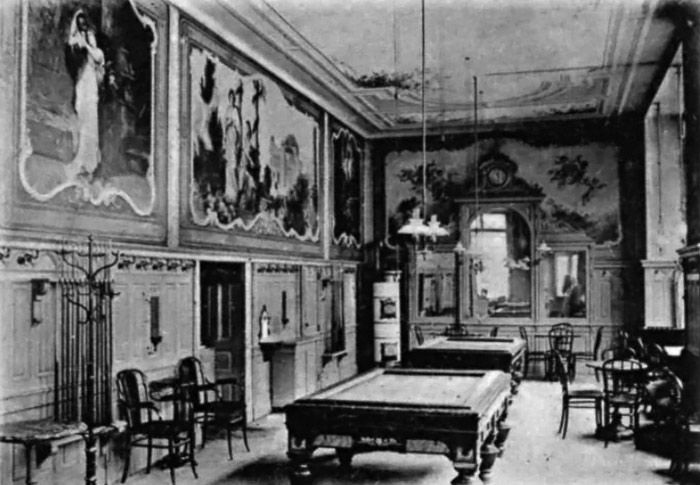
There were eight other coffeehouses at the square: Croatia, New York, Europa, K vječnom svjetlu, Leibnerova kavana, Merkur and Royal.
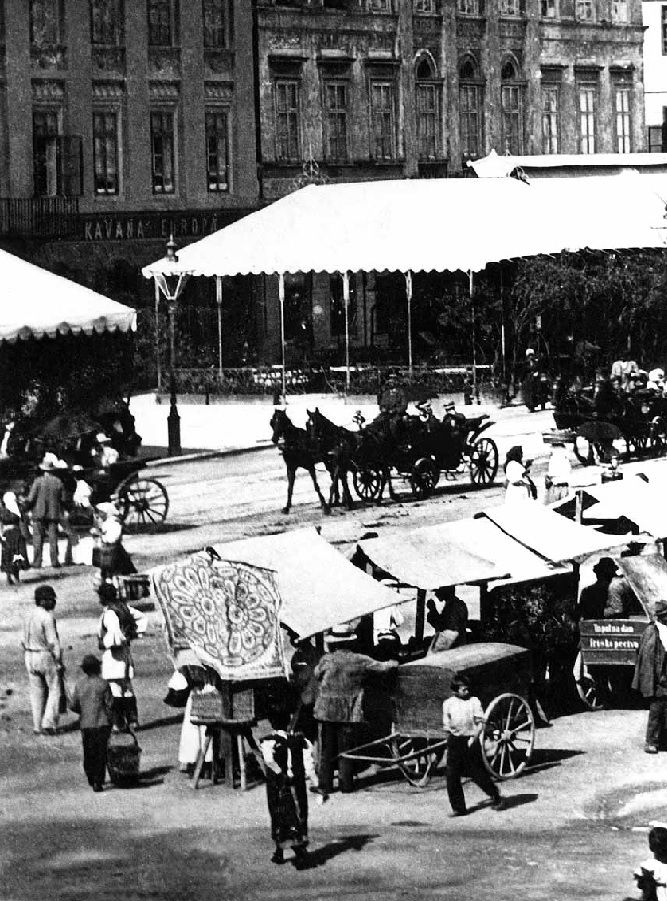
Europa in 1898.
One of the most famous coffeehouses outside Harmica was Palainovka at Ilirski trg, opened in 1837 and still a popular spot today.

Palainovka in 1836.
The interiors of most Zagreb coffeehouses resembled the interiors of their Vienna counterparts. The most posh and the most beautiful coffeehouse in Zagreb was undoubtedly Corso, on the corner of Gundulićeva Street and Ilica. 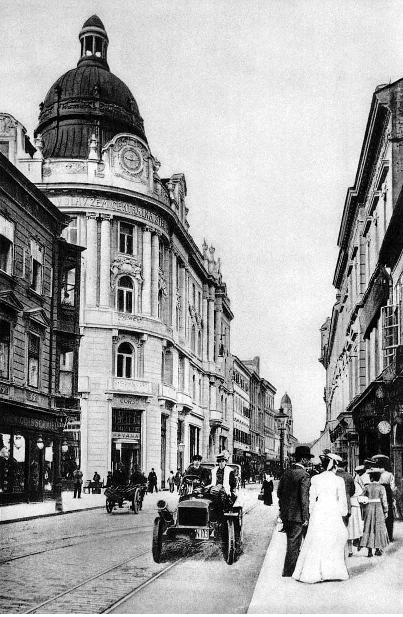
Corso in 1906.
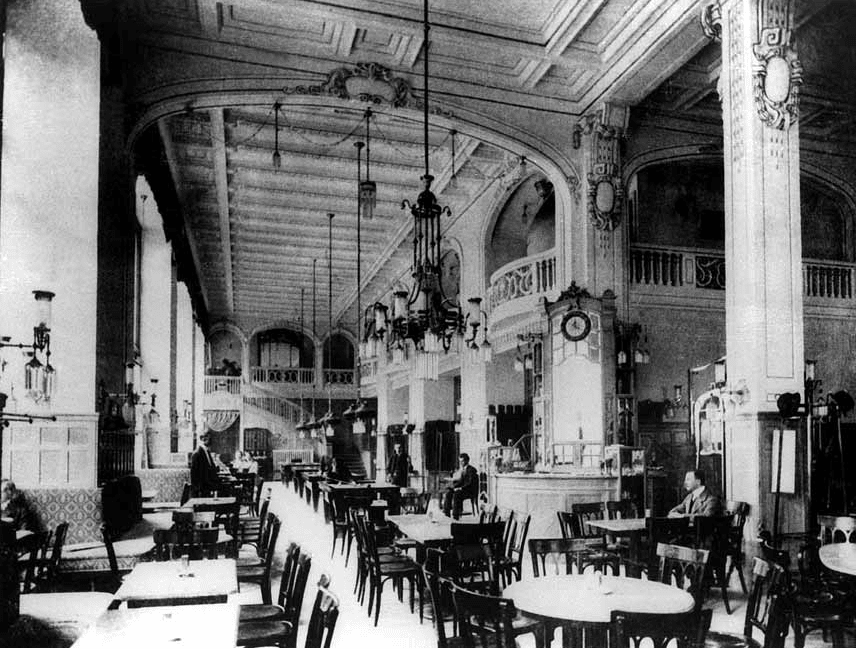
Corso, interior, 1906.
Other memorable coffeehouses were Kazališna kavana, Central and Mala Kavana.
The first coffeehouse to depart from the traditional Vienna-style interior was the Bosnian coffeehouse, opened by Mehmed Husenšević in Petrinjska Street in 1803.
One of the most exclusive hotels in Zagreb, Esplanade, was opened next to the Main Railway Station in 1925 and the hotel and its coffeehouse housed innumerable passengers of the Orient Express who were travelling to or through Zagreb. Travel memoirs became one of the most popular genres of literature, and people loved reading them while drinking coffee.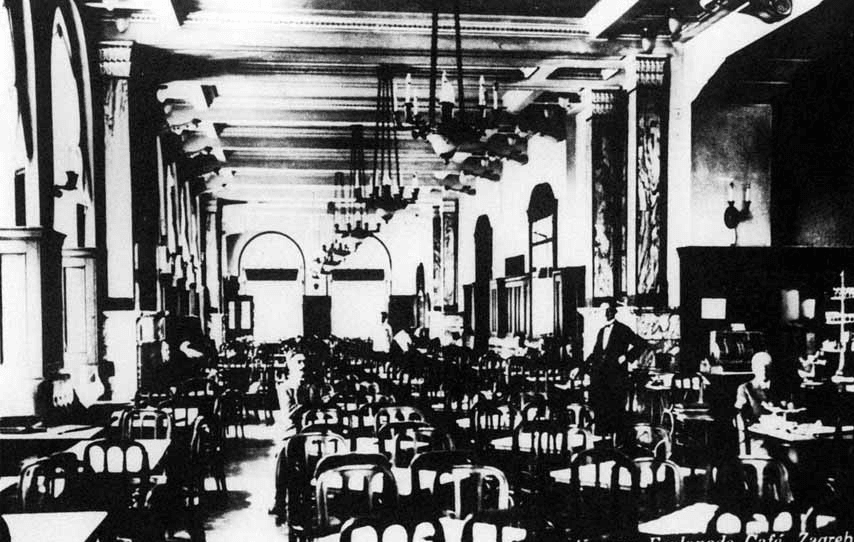
Five years later, in 1930, the biggest coffeehouses in Zagreb was opened – Gradska kavana. Its capacity inside was 600 people, and an addition 300 outside, which was an impressive number for a city coffeehouse. The interior was decorated in the style of Art Deco, which appeared in Paris five years before that, and it was the most luxurious coffeehouse in the city.
Gradska kavana by Tošo Dabac
The coffeehouse has changed appearances with varying degrees of success, until it was finally renovated and became the popular Johann Franck.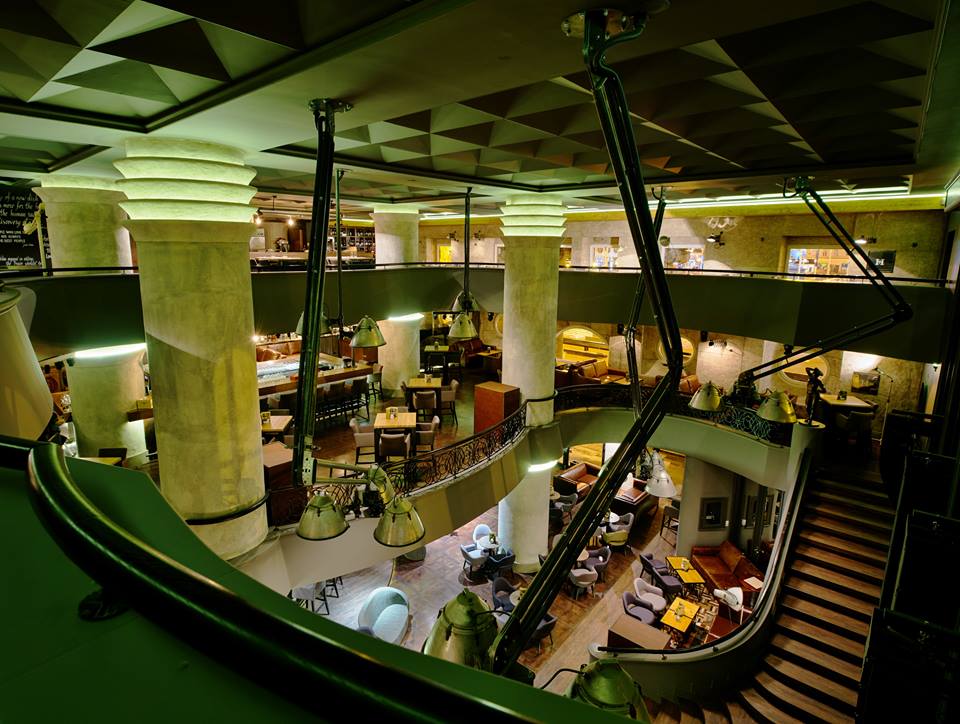
These traditional coffeehouses started to disappear in the second half of the 20th ct and were replaced by smaller cafés and bars, where guests mainly drink espresso and spend significantly less time at.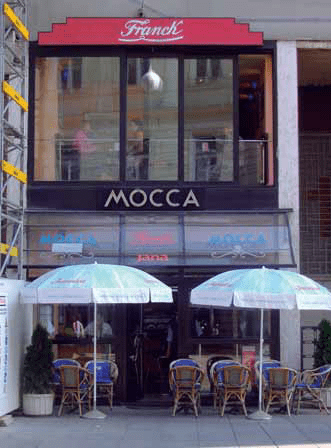
The cult Mocca
Zagreb entered the 21st ct with more than 18,000 registered hospitality facilities, most of them being café-bars.
Even though when it comes to the interiors and size of coffeehouses, some trends have changed, one thing will never change – Zagreb and its people will always have a special place in their hearts for a chat with friends over a warm cup of delicious coffee.


